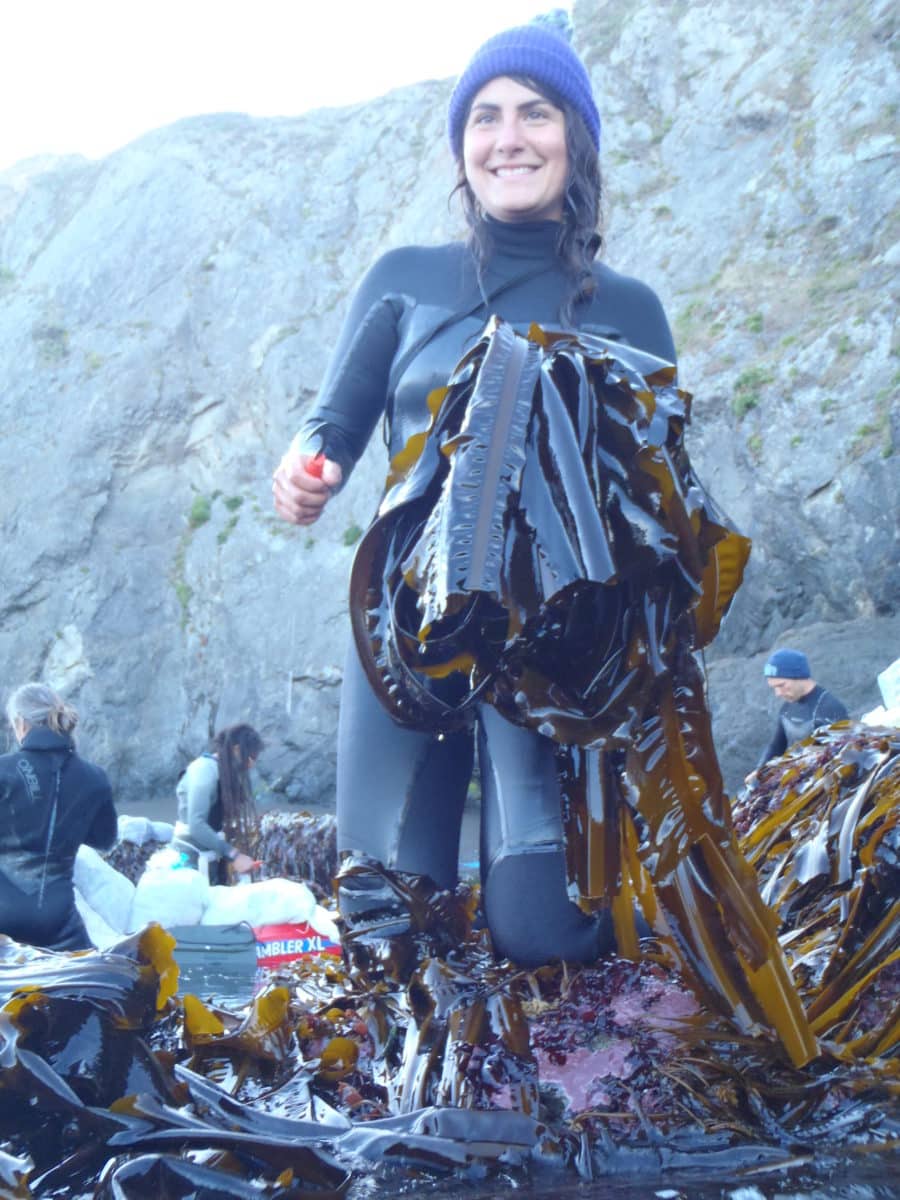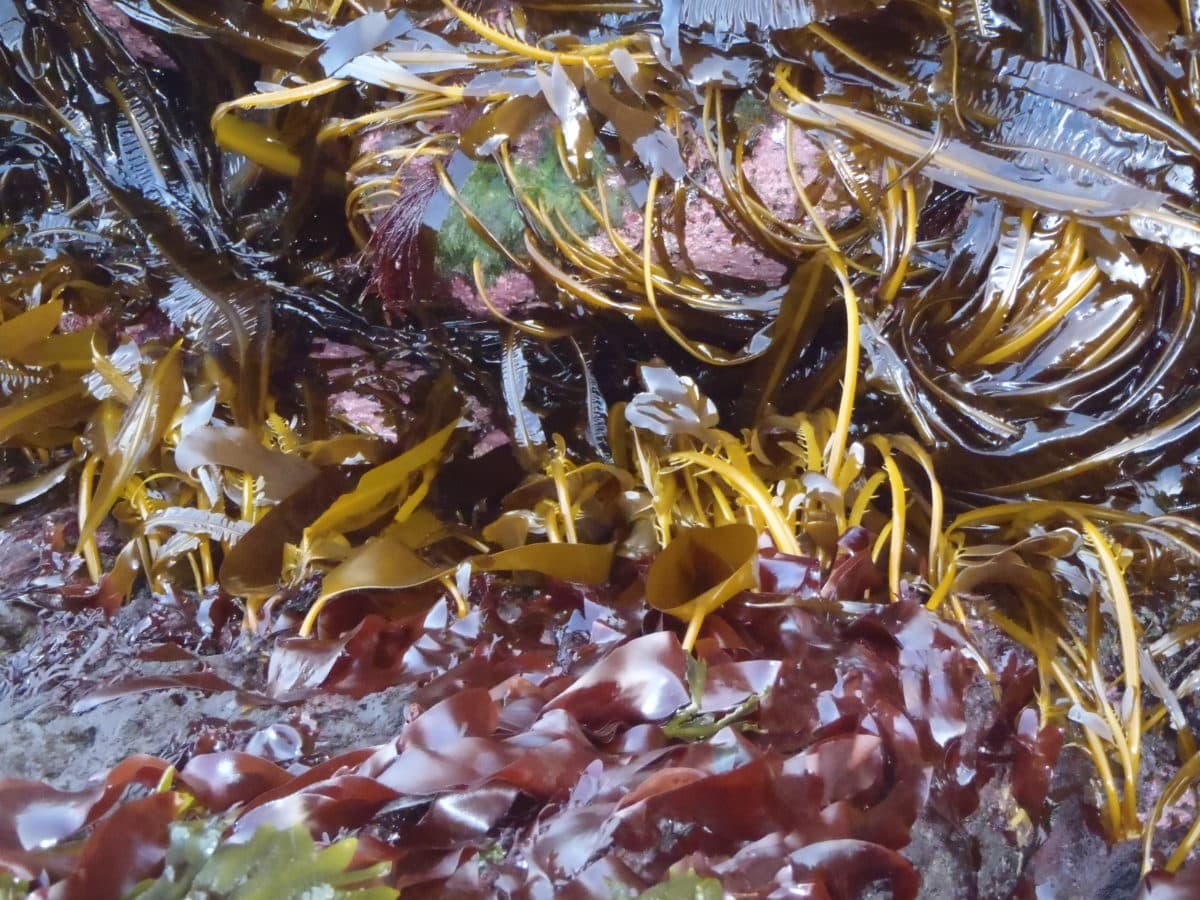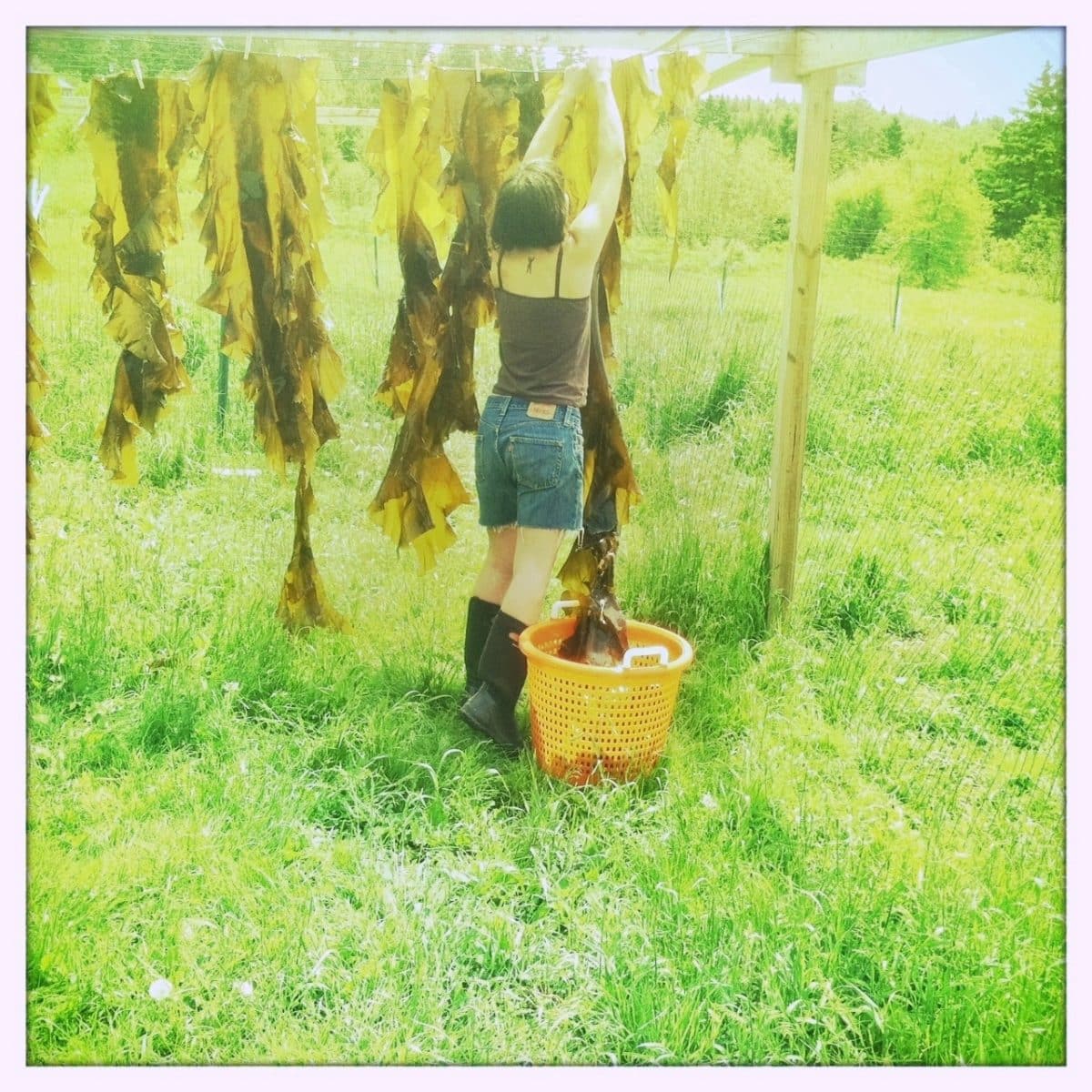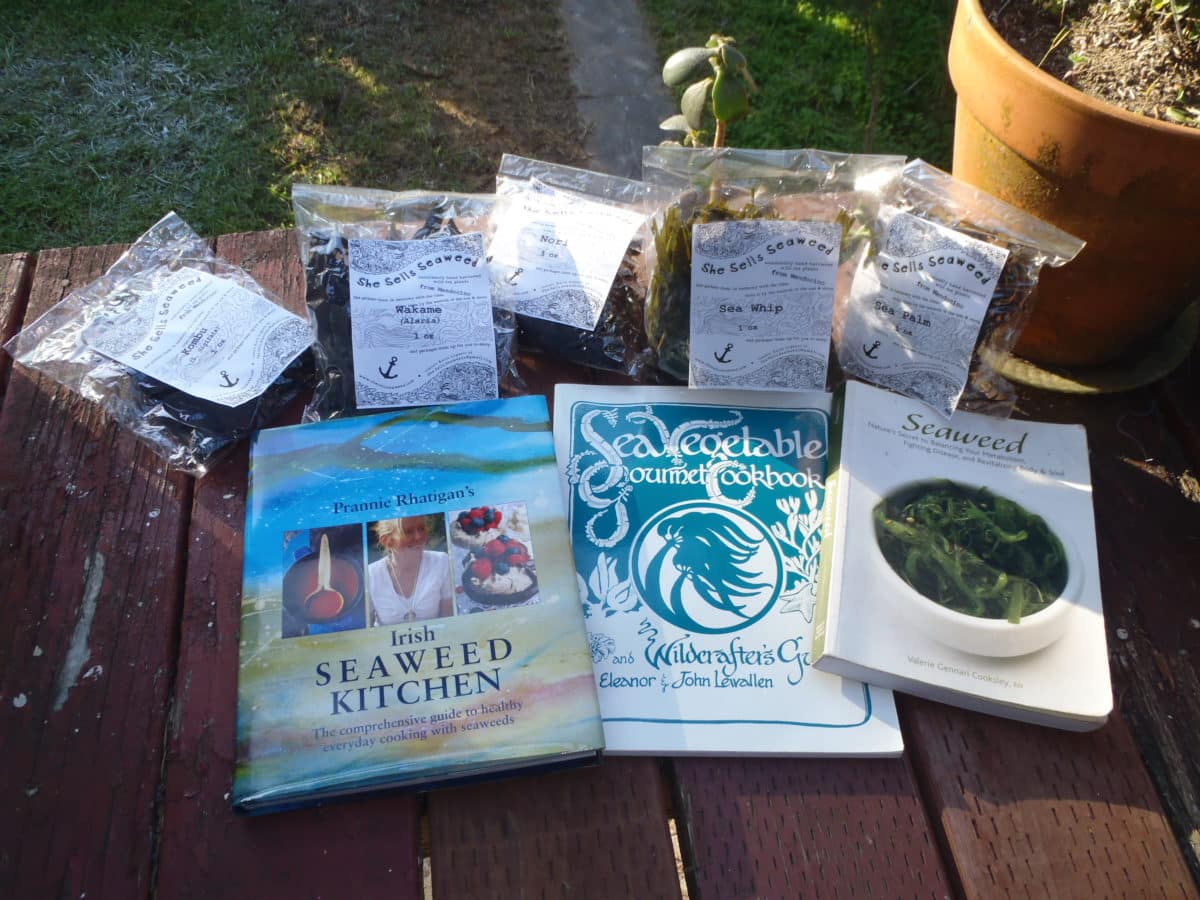I have been tangled up in seaweed for the past seven years, beginning in Maine with an extensive seaweed harvesting apprenticeship. What led me to seaweed harvesting was the desire to live by the ocean and learn more about plants, homesteading, and living close to the elements. I sought out the opportunity to apprentice a seaweed harvester; the college I attended – Warren Wilson College – has a work program, and many of the students develop a passion for learning trades and other types of work on the land.
I took dried seaweeds all over the northeast United States to sell and to share what I had learned about seaweed’s culinary uses and health benefits. From there I eventually was pulled west to the tide pools in California, harvesting for a friend’s business. Whether for culinary ends, or simply a pleasurable slippery day on the rocks, field guide in hand, seaweed has been a wonderful excuse to breathe salty air deep into my lungs, saturating my being with the blue planet brine.
What is a day like on the rocks? Come with me on a short seaweed outing along the shores of my memories.

In North America, edible seaweeds are gathered along the northern Atlantic and Pacific shores around the same time of year – late spring to early fall. Choose your favorite cove and slip your feet into your muckers. Dress warmly; wool and fleece are always nice against chilly air and water. Walk confidently toward the sea, along the trail and down the cliff. It is barely sunrise; the waters are receding and the pull is felt deep within. In your mind’s eye you anticipate the image of the ledges and tide pools emerging as the tide tapers. The glimmer of the rising sun reflects off the bobbing seaweed stems – also called stipes – extending from their holdfast on the rocky ocean bottom. Hunting for these beds of seaweed is like hunting for treasure and it takes caution, intuition, and a selective eye. Guided by a seasoned harvester whose hands have passed through thousands of giant kelp fronds, it is your turn to pick and nibble on the greens of the sea.

After anchoring our boats and kayaks we walk along to greet the small tender edible varieties of seaweed that create the salad bowl scattered across the shore. Mixed in with the pinkish burgundy digits of the dulse fronds are speckles of sun-baked crispy black nori drying on the tops of the smooth round boulders. You notice the layers – called zones – where different types of seaweed grow. Rockweed snaps and whines under your feet as you make your way, and the shadows of dawn tuck into crevices. As the sun lifts, the circulation returns to frozen fingers and toes, and the colors of all of the different varieties – both palatable and not – catch your eye.
Silently and cautiously stepping past a washed up piece of kelp, you take a moment to notice how pigments hiding beneath the iodine brown develop to emerald green. You continue tasting salty bits of each different variety familiar to you from flipping through the pages of your books; field guides to the edibles of your region’s coastline.
You stop to listen to the small waves lapping the shore, and the birds seem as territorial as the seals but are much more vocal. Wishing you spoke their language, your curiosity leads you through the rockweed and red zone to the swirling brown edge of the sea. Time moves quickly when the tide hits dead low and you realize now, standing waist deep in water, that the urgent call of the cormorant was a reminder that minutes are rolling away with each wave. Swift yet selective, you cut sections of thick kombu and the golden spine of the alaria; the bobbing head of the kelp is just out of reach.

Retreating back up the beach, you retrace your steps, followed by the incoming waters. Seaweeds along the beach re- hydrate with the tide while you find a toasty place to spread your harvest. Long fronds will be strung up to dry and small varieties will be scattered on rocks. When brittle, each variety — each a different shade of the sea, with different combinations of minerals and vitamins — will be stored and later simmered into broths.


Seaweed is a food with great potential to nourish and heal the body. There are no poisonous seaweeds in New England and the Pacific Northwest, only some unpalatable varieties and polluted waters. Seaweed should be harvested from clean waters away from boats and run-off from shore. Don’t eat seaweed that has washed up on the beach unless it’s cold, wet and looks fresh. Drying seaweed promptly and at a good hot temperature is preferable, and makes a nice looking specimen for displaying in glass jars in your pantry. There is no need to wash seaweed after cutting or before preparation, as the surface sea salts are an excellent source of trace minerals. Add seaweeds to soups, or soak and add to stir fries. Toasted, they can be eaten as a snack or pulverized to use as a seasoning. Local seaweeds prepared at home have multiple times the nutrition of dried seaweed snacks and seaweed salads found at restaurants.

These resources provide good photographs and descriptions for foragers.
The Seaweed Site: Information on marine algae
The beautiful cookbook The Irish Seaweed Kitchen by Prannie Rhatigan
Pacific Seaweeds by Louis Druehl
Sea Vegetables, Harvesting Guide by Evelyn McConnaughey
Seaweed: Nature’s Secret to Balancing Your Metabolism, Fighting Disease, and Revitalizing Body and Soul by Valerie Gennari Cooksley
Stalking the Blue-Eyed Scallop by Euell Gibbons ![]()
